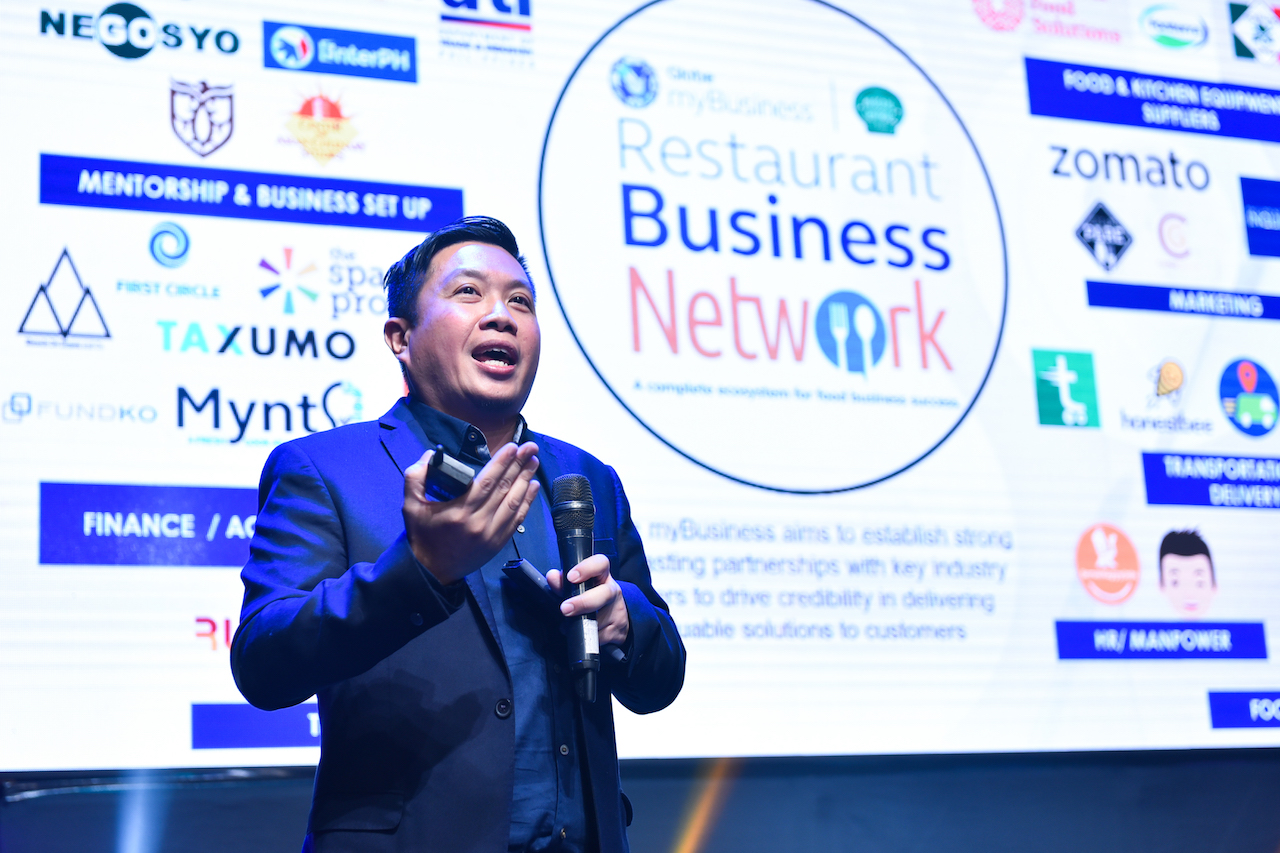Aspiring restaurateurs and entrepreneurs flocked to Maybank Theater to participate in the first RestomaniaPH, a two-day forum and expo that gathered businessmen, chefs, and brands in the restaurant and cafe industry.
The series of talks and panels featured Potato Corner’s Jose Magsaysay, Mercato Centrale’s RJ Ledesma, and Zomato’s Tanvi Saxena, all of whom gave attendees insights on how to grow their business. “Filipinos are very entrepreneurial people, and 99 percent of the business comprises these small businesses. We aim to champion the success and growth of these small and medium businesses,” says Globe myBusiness senior advisor Derrick Heng.
Technology’s relevance in the restaurant industry
According to Heng, just last year, over 2,000 restaurants and over 100 food parks opened in the Philippines, signaling food’s continuing dominance in the market. Commercial establishments have increased allocation for restaurant space. Celebrity chefs are also gradually taking the spotlight in local media on top of the increase in international franchises and enrollment rate in culinary institutions.

The restaurant industry is also quickly evolving, thanks to technology. There are currently 67 million Filipinos who are active users of the internet and social media, and they spend about nine hours online on average.
Heng, presenting data from Modern Restaurant Management, NRN, and Empathica Research, said that 50 percent of restaurant searches are done online, 55 percent of customers have used tabletop tablets to order, 75 percent of millennials are likely using full-service restaurant apps, and 72 percent (or three out of four) customers have used Facebook to make restaurant decisions. Customers are including Wi-Fi and battery life as part of their basic needs, with 67 percent of the population constantly needing Wi-Fi to connect with the world.
Despite these welcome developments, restaurants are still shutting down because of a lack of business connections and limited knowledge in finance, marketing, and the ability to sustain the business in the long run.
The eating habits of Manila
“It’s crazy how many people are on their smartphones or tablets checking restaurants in Manila every day,” says Tanvi Saxena, Zomato area sales manager for central and south region.

The restaurant search and discovery service presented comprehensive data to give a picture of today’s digital diners. Since January, an average of a million people searched for restaurants in Manila through their website and app per month. “It’s so important to have the right concept and the right market demand to open and sustain a restaurant, so you can efficiently manage the cost of operations and the revenue you’re generating,” says Saxena.
Quezon City has the most number of restaurants that opened and shut down, according to their findings, mainly because of the geography yet there has been an increase in foot traffic in Malate and Diliman establishments.
“It’s so important to have the right concept and the right market demand to open and sustain a restaurant, so you can efficiently manage the cost of operations and the revenue you’re generating,” says Tanvi Saxena of Zomato.
Surprisingly, Filipino restaurants have closed the most in the last year, while Korean cuisine is the trendiest. A possible reason for the shutdowns is the competition between Filipino restaurants, their locations, and the emergence of food parks. However food parks weren’t spared either. Out of the numerous food parks that opened in 2017, more than 50 percent have already closed down.
This year’s forecast meanwhile sees a lot of restaurants addressing the need to provide ketogenic meals and convenient gourmet food.
The government’s role
For its part, the government has issued Executive Order No. 50 to speed up the processing of business application within 15 days.
“We’re convincing our regulators that the mindset should be developmental instead of regulatory,” says Jerry Clavesilla of the Department of Trade and Industry’s Bureau of Micro, Small and Medium Enterprise Development. Through this order, the government will provide simplified access to finance, promote and enhance management and labor capacities, upgrade the technology, and give access to the market in order for SMEs to move forward.





